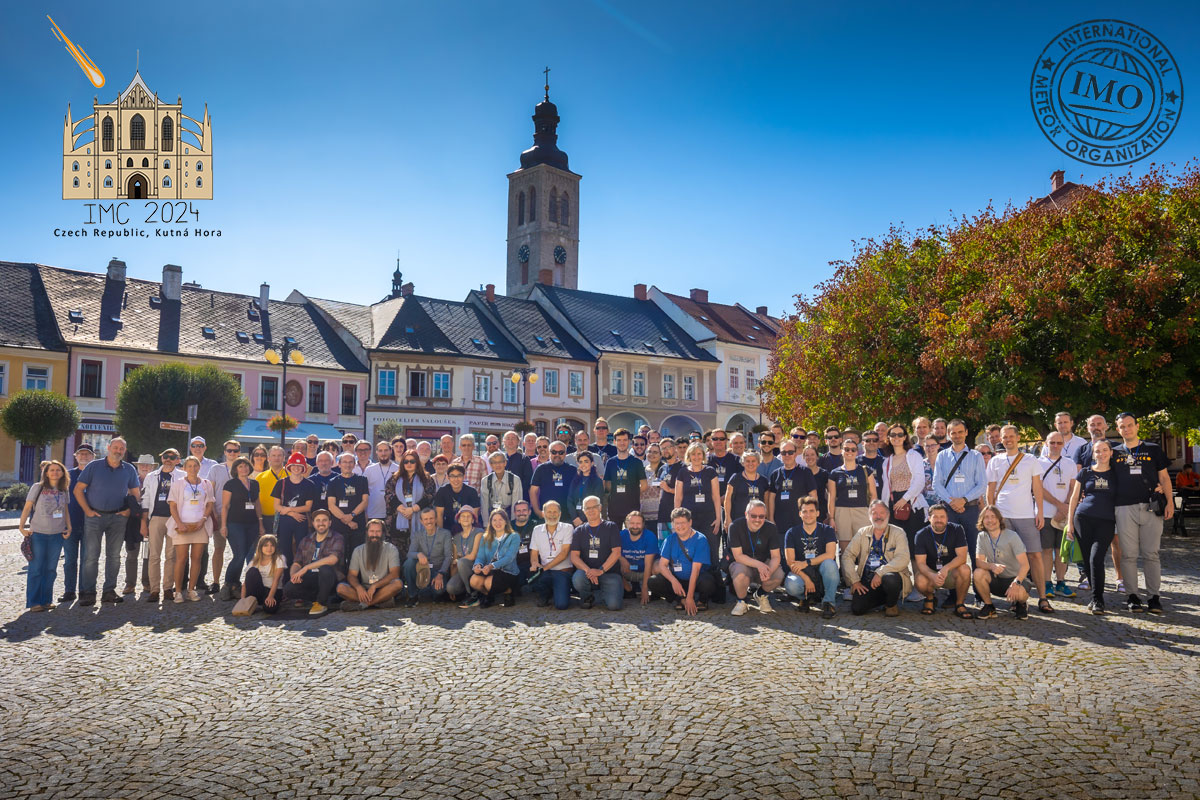
The 43rd International Meteor Conference was held from September 19 to 22, 2024 at the Hotel Mědínek in Kutná Hora – a town in the Czech Republic famous for silver mining in the middle ages. The conference featured 101 on-site, and 38 on-line participants from 23 countries.
Before the first lectures, participants had the possibility to visit the mines and the accompanying museum, guided by the local professionals. After returning from the mines and enjoying the local cuisine, the conference was officially opened.
The event that sparked a lot of discussion in the community and dominated the talks was the Ribbeck meteorite recovery. Asteroid 2024 BX1 was an asteroid discovered only hours before colliding with the Earth. In such a short time, thanks to the passion and timely response of many members of the asteroid and meteor community, the object was followed up with a multitude of observations. Its orbit, as well as the time and place of entry were precisely calculated. Video, infrasound, seismic and spectroscopic data were acquired from the event and analysed within days. Thanks to all these data, a strewn field was constructed, and within 24 hours a search was organized. Spectroscopic observations revealed the next day that the meteorite is low in iron, and not expected to be of the usual black colour. With this information, subsequent searches led to the find of over a hundred fragments. This accomplishment undoubtedly validates all of the hard work by the whole community.
The second day started with talks focused on the reliability of the hardware and software used for video and radio meteor observations. Subsequent talks were predominantly about the Geminid meteor shower and included the analysis of orbits and the radiant, the structural integrity dependence on size, as well as annual sodium variations. The day concluded with the IMO General Assembly Meeting and the traditional performance of the IMC song.
The third day featured the talks on asteroid and meteoroid dynamics, followed by ongoing meteor work reports and ideas for new observational methods and models. The talks finished at noon, allowing ample time for the excursion and socialising. The excursion was a guided historical tour of Kutná Hora. Upon completion, many participants also visited the Sedlec ossuary located at the other side of town.
The final day featured talks about meteor and meteorite spectroscopy, along with ongoing meteor work.
The IMC 2024 once again proved itself as a fitting stage for sharing meteor-related work and bringing the community together. All of this would not have been possible without the extensive efforts of the Local and Scientific Organizing Committees.
This year’s IMC may be over, but we are looking forward to seeing you at the next one, which will take place from September 18 to 21, 2025 in Soest, The Netherlands. Don’t miss it!




 You saw something bright and fast? Like a huge shooting star? Report it: it may be a fireball.
You saw something bright and fast? Like a huge shooting star? Report it: it may be a fireball.  You counted meteors last night? Share your results with us!
You counted meteors last night? Share your results with us!  You took a photo of a meteor or fireball? You have a screenshot of your cam? Share it with us!
You took a photo of a meteor or fireball? You have a screenshot of your cam? Share it with us!  You caught a meteor or fireball on video? Share your video with us!
You caught a meteor or fireball on video? Share your video with us!
2 comments
Sounds like a good one, unfortunate that I couldn’t make it this time.
Hopefully see you next time!
Bill.
You were missed, my friend!